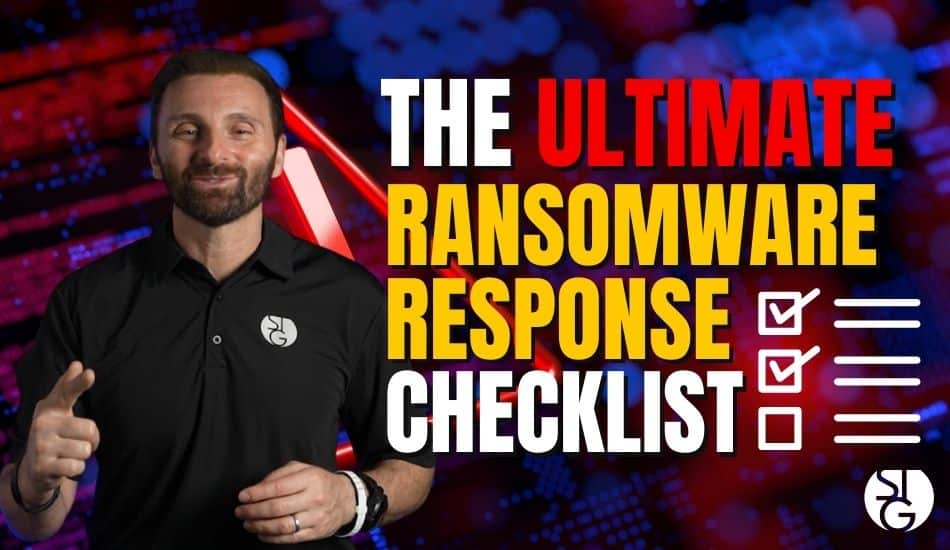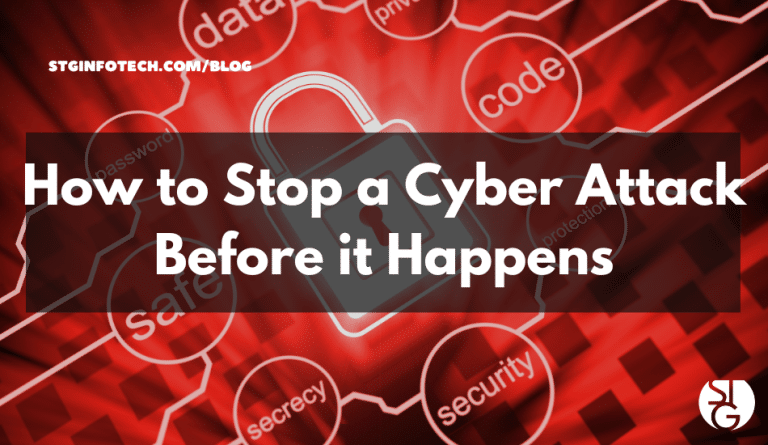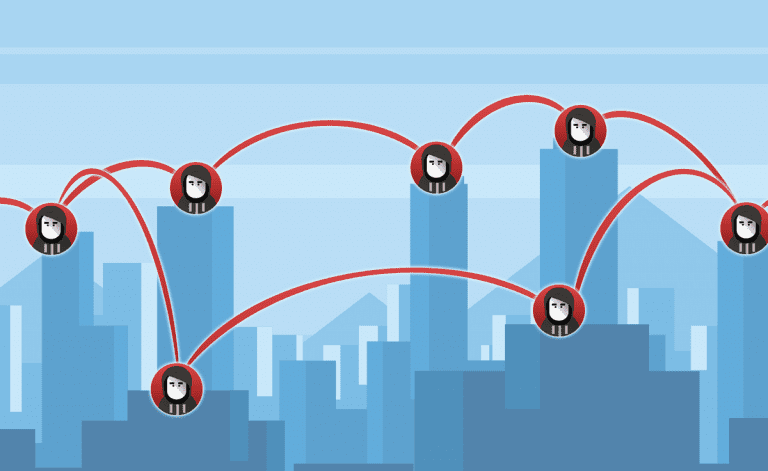At STG Infotech, we understand that remote work brings unique cybersecurity challenges, and ransomware is one of the most disruptive threats you might face.
What Is Ransomware
Ransomware is a type of malicious software (malware) that encrypts a victim’s files, systems, or data, rendering them inaccessible until a ransom is paid, typically in cryptocurrency like Bitcoin.
Cybercriminals use ransomware to extort money from individuals, businesses, or organizations by threatening to permanently lock or leak sensitive data. Below, we provide a clear and concise explanation of ransomware, its impact, and its relevance to remote workers, in line with our commitment to empowering secure remote work environments.
We like to stress the importance of proactive maintenance when it comes to your cybersecurity solutions, but you don’t always have that luxury. Here’s what to do when you get caught in a trap with the ultimate ransomware response checklist.
Cyber-attacks pose a significant risk to businesses of all sizes, but especially ransomware, potentially causing major disruption and financial loss.
Ransomware is malicious software designed to block access to a computer system or files until a sum of money is paid. These attacks can be devastating because they often target critical systems and sensitive data.
In this post, we share a checklist you can follow for steps to take directly following a ransomware attack.
Ransomware Response Checklist
Download our free Ransomware Response Checklist to follow along.
Step 1: Detection and Analysis
The first step in responding to a ransomware attack is detection and analysis.
Your business must be able to quickly identify which systems have been compromised and isolate them from the network to prevent further spread.
This involves prioritizing critical systems and taking them offline if necessary.
Additionally, it’s crucial to determine the nature of the ransomware and its impact on the affected systems.
By analyzing the ransomware variant and understanding its behavior, your business can develop a more effective strategy for containment and recovery.
At this point, it’s a good idea to consider using forensic tools and techniques to gather evidence for potential legal or law enforcement actions.
Step 2: Triage Impacted Systems for Restoration and Recovery
Once the infected systems are isolated, the focus shifts to restoration and recovery.
You must prioritize the restoration of critical systems essential for daily operations.
This involves triaging impacted systems, identifying data housed on affected devices, and developing a recovery plan.
Consider using offsite backups and disaster recovery strategies to expedite the restoration process.
If you’re maintaining up-to-date backups and regularly testing recovery procedures, your business can minimize downtime and mitigate the impact of ransomware attacks on its operations.
Step 3: Conduct Threat Hunting Activities
Ransomware attacks often involve sophisticated techniques to evade detection.
Conducting thorough threat-hunting activities will uncover hidden threats and neutralize them.
This involves analyzing network traffic, monitoring for unusual behavior, and identifying potential data exfiltration.
Consider leveraging threat intelligence sources and collaborating with industry partners to stay informed about emerging threats and attack trends.
By staying vigilant and proactive, businesses can mitigate the risk of further damage and strengthen their overall security posture.
Step 4: Take Back Control with Containment and Eradication
Once the extent of the attack is understood, it’s time to focus on containment and eradication.
This involves taking decisive action to contain the spread of the ransomware and eliminate it from infected systems.
Your business should consider implementing network segmentation and access controls to prevent lateral movement by attackers.
I strongly suggest deploying endpoint detection and response (EDR) solutions to identify and remediate malicious activity on endpoints.
By isolating infected systems and removing ransomware payloads, you can regain control of the business’s IT environment and minimize the impact of an attack on operations.
Step 5: Recovery and Post-Incident Activity
As systems are restored from backups and operations resume, it’s time to reflect on the incident and learn from the experience.
It is at this point that you can document the lessons learned, update security protocols, and reinforce defenses to better protect against future attacks.
Conduct post-incident reviews and tabletop exercises to identify areas for improvement and refine their incident response plans.
Consider engaging with industry forums and info-sharing communities to share experiences and learn from others.
Getting Extra Help
IT Providers can help prevent issues like this too.
By embracing a culture of continuous improvement and collaboration, your business can come out of a ransomware attack more resilient in the face of cyber threats.
Ransomware attacks represent a significant threat to businesses, requiring a coordinated and decisive response.
By following the steps outlined in this post and leveraging insights from organizations like CISA, businesses can navigate ransomware attacks more effectively and mitigate the risk of disruption and financial loss.
Remember, preparation and swift action are key to staying ahead of cyber threats in today’s digital landscape.
By investing in robust cybersecurity measures, businesses can protect their assets and safeguard their future success in an increasingly interconnected world.
Key Characteristics of Ransomware
- Encryption of Data: Ransomware uses advanced encryption algorithms to lock files or entire systems, making them unusable without a decryption key. For example, a remote worker’s critical project files or company database could become inaccessible.
- Ransom Demand: Attackers demand payment, often with a deadline, promising to provide the decryption key or prevent data leakage. Payments are typically requested in cryptocurrencies to maintain anonymity.
- Delivery Methods: Ransomware is commonly delivered through phishing emails (e.g., malicious attachments or links), exploited software vulnerabilities, or compromised websites. Remote workers, as highlighted in our phishing response guide, are particularly vulnerable to phishing attacks.
- Data Leakage Threat: Modern ransomware variants, like double-extortion attacks, not only encrypt data but also steal it, threatening to publish sensitive information if the ransom isn’t paid.
- Impact: Beyond financial loss, ransomware can disrupt operations, damage reputations, and lead to legal or regulatory consequences, especially if sensitive customer or company data is compromised.




